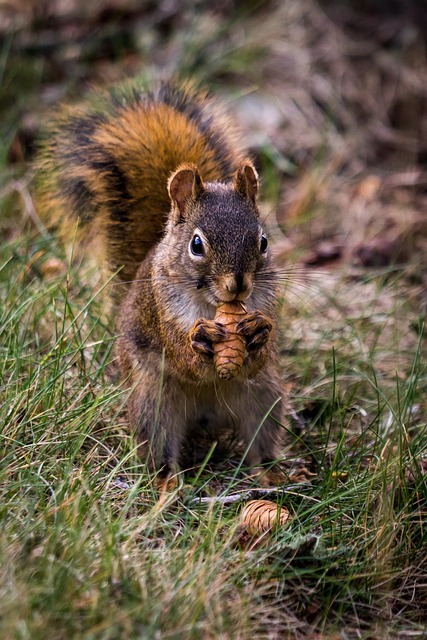Commercial squirrel removal focuses on non-lethal techniques like habitat modification, exclusion, and live trapping due to squirrels' adaptability. While marketed as humane, live trapping and relocation can cause stress for squirrels, and released animals face challenges in urban environments. Prevention is more effective than treatment, with strategies including proper drainage, sealing entry points, trimming trees, keeping property clean, using repellents, and setting up visual deterrents. Always choose a reputable commercial squirrel removal company to ensure compliance, animal welfare, and effective management.
Squirrels can become a nuisance, but understanding their behavior is key to effective management. This article navigates the world of commercial squirrel removal, debunking common myths and providing insights into humane control methods. We explore strategies to prevent infestations and highlight legal and safety considerations crucial for professionals. Discover practical steps to address squirrel issues, ensuring a harmonious coexistence with these bushy-tailed visitors while maintaining a safe and legal approach to commercial squirrel removal.
Understanding Commercial Squirrel Removal: Debunking Common Myths
Commercial squirrel removal is a specialized service offered by professional pest control companies, designed to address squirrel infestations in urban environments. It involves understanding the species’ behavior and implementing effective yet humane methods for their exclusion and control. One of the most pervasive myths surrounding commercial squirrel removal is that it solely involves lethal methods. However, this could not be further from the truth. Professional services prioritize non-lethal techniques such as habitat modification, exclusion strategies, and live trapping, ensuring squirrels are safely removed without causing harm.
Another common misconception is that commercial squirrel removal is a one-time fix. In reality, it often requires ongoing management due to squirrels’ adaptability and rapid reproduction rates. Regular inspections and preventative measures are key components of successful long-term control. By debunking these myths, property owners can better understand the professional approach to squirrel removal, fostering effective and humane solutions for coexisting with these critters in urban spaces.
The Truth About Humane Squirrel Control Methods
Many people believe that humane squirrel control methods are a gentle and effective way to manage these creatures, but it’s essential to understand what this term truly entails. Commercial squirrel removal companies often market themselves as humane, promoting live trapping and relocation as ethical alternatives to lethal methods. While these techniques do not cause immediate death, they can subject squirrels to significant stress and discomfort. Live traps ensnare squirrels, keeping them confined until release, which can be challenging due to the urban environment’s dangers for released animals.
The ‘humane’ aspect is often a marketing strategy rather than an accurate reflection of the process. Squirrels are wild animals adapted to survival in natural settings; their release into unfamiliar territories or close proximity to human habitats can result in stress, disease transmission, and even death. Commercial removal services may offer these methods for legal or public relations reasons but should be scrutinized for their true effectiveness and potential long-term impacts on squirrel populations.
Effective Strategies for Preventing Squirrel Infestations
Squirrel infestations can be a nuisance, but preventing them is often more effective than addressing an existing problem. Commercial squirrel removal experts recommend several strategies to deter these rodents from taking up residence in your home or property. One of the most crucial steps is maintaining proper drainage and sealing off any potential entry points, such as gaps around pipes, wires, or doors. Squirrels are excellent climbers, so ensuring your structure has sturdy, sealed siding can significantly reduce their interest in your space. Regularly trimming trees and shrubs near your home also helps, as it reduces the ease of access these critters have to your roof and gutters.
Additionally, keeping your property clean and free of debris creates an unappealing environment for squirrels. Food sources like nuts, seeds, or even pet food left outdoors can attract them, so proper waste management is key. Commercial squirrel removal services often recommend using repellents and visual deterrents as well. Motion-activated lights and noise makers can startle squirrels and discourage them from lingering. Natural repellents like cayenne pepper or certain plant oils can also be effective in keeping these furry visitors at bay.
Legal and Safety Considerations in Commercial Squirrel Management
When it comes to commercial squirrel management, legal and safety considerations are paramount. Before attempting any form of squirrel control, businesses must familiarize themselves with local, state, or national regulations regarding wildlife management and pest control services. Commercial squirrel removal should only be carried out by licensed professionals who adhere to strict safety protocols. This is not just a matter of compliance; it’s crucial for the well-being of both the squirrels and the people involved.
Unlicensed individuals might employ harmful methods, such as toxic bait or aggressive trapping, which can lead to animal suffering and pose risks to human health. Additionally, improperly handled squirrels can transmit diseases. Professional services, however, use humane traps, non-toxic repellents, and strategies that minimize stress to the animals while effectively managing their presence in commercial areas. Always opt for a reputable company specializing in commercial squirrel removal to ensure safety, legality, and ethical practices.
In conclusion, effective commercial squirrel removal requires a nuanced approach that balances humaneness, prevention, and legal considerations. By debunking common myths and adopting evidence-based strategies, property managers and homeowners can ensure safe and sustainable co-existence with these furry visitors. Understanding the legal framework and prioritizing humane methods not only respects wildlife but also prevents future infestations, making it a win-win for both humans and squirrels.
